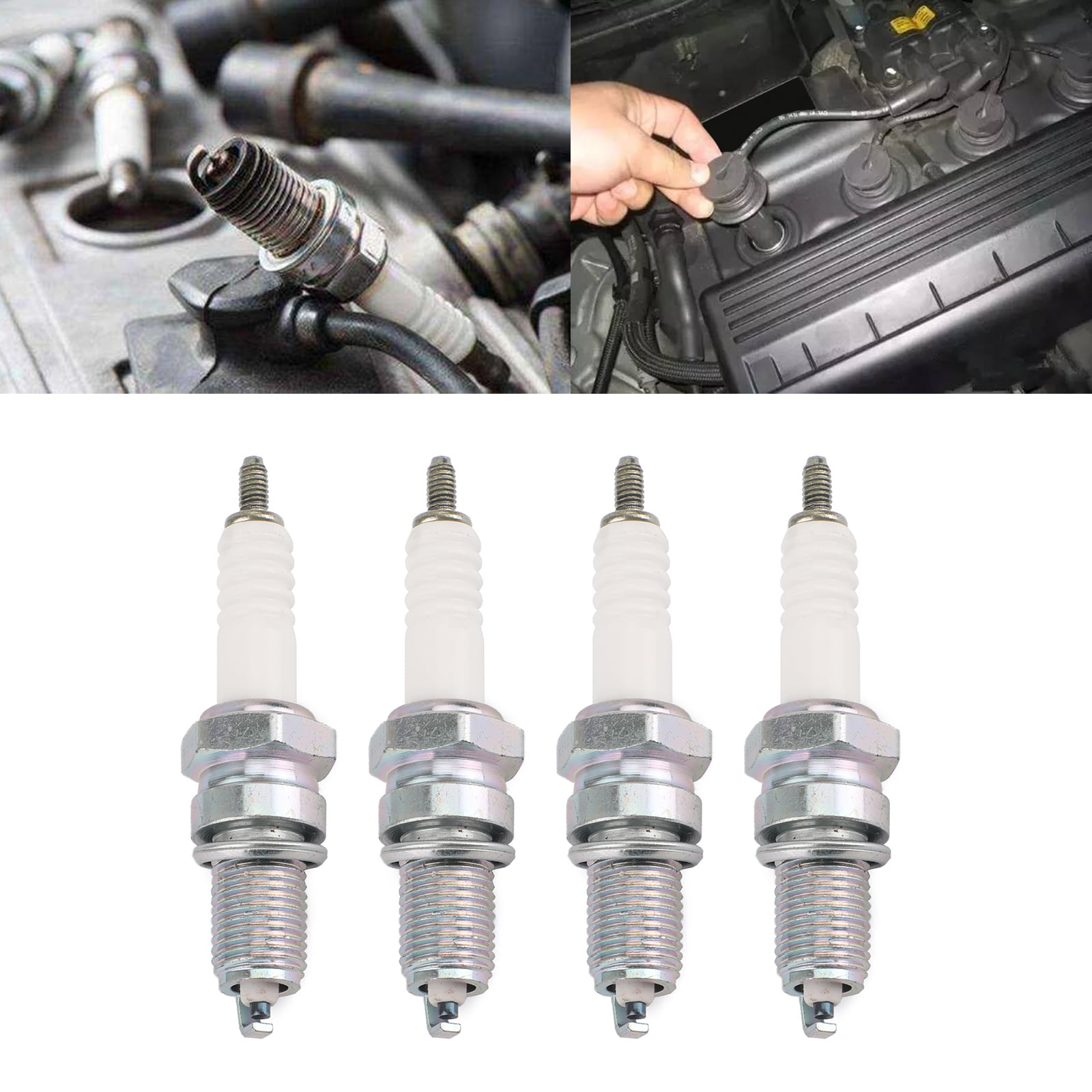

- How to install spark plug wires on a gl1100 how to#
- How to install spark plug wires on a gl1100 full#
An ohm meter measures resistance and is normally a feature found on volt meters. If, however, you seem to have a miss, there is one further test you can run.

If the car seems to be running well, this is all the testing you need to do. You will also need to install a different coil, one with the push in style terminal, but this would be a good time to install a Lucas Sports Coil anyway, right? If it is not a show car, the 68-74 distributor cap will fit the distributor and allow you to use silicone wires that push into it. If it is a show car, get the copper wires, which were originally correct for this model. One problem with the silicone wires is that they do not work well with the screw in, side terminal caps on the Mark I cars. They are available from BAP and other sources. The ones by Robert Bosch seem to fit the B very well and last well. If you see blue sparks, you need to replace the wires with a good quality set of replacement wires. Running the car in the garage will help to cut down the ambient light, but make sure the door is open to prevent the build up of carbon monoxide. Put your hands in your pockets when performing this inspection and do not take them out until you are ready to turn off the engine. WARNING: It is dangerous to work around the engine compartment in the dark with the motor running.

In really bad cases, this can actually light up the right side of the engine compartment.
How to install spark plug wires on a gl1100 full#
This indicates the current is leaking through the insulation and the full current is not being carried to the distributor cap and then to the spark plugs. You need to start the car with the hood open and run it while looking for blue sparks off the wires or a blue glow surrounding them. Always check to see that all connections are properly seated. This is especially a problem at the cap, but Bob and Gil found two wires loose at the spark plugs on two different cars when they were helping me a couple of weeks ago. Four cylinder, in line engines are not the smoothest running of beasts and, sometimes, a wire will work its way loose. The next thing to check is that the ends of the wires are firmly attached to the spark plugs, the distributor cap and the coil. But, we all make the rare mistake and doing one wire at a time will help to keep the mistakes rare. Most old hands will be able to install the wires on a bare cap and get them in order with no problems. It is best to remove one wire at a time to prevent mixing them up. Examine each wire and, if dirty, clean with either waterless hand cleaner or dish washing detergent. It can also speed the breakdown of the insulation, leading to current leakage. Dirty build up on the exterior of the insulation may allow some of the current to be lost. The first step in inspecting the wires (of both types) is to check to see that they are clean. Unfortunately, they still do not last as long as a good set of copper wires and need to be inspected to see if they are functioning properly. Today, silicone wires, much changed from the earlier versions are the standard. The only drawback to the silicone wires was that they wore out. With the silicone wires, none of this extra suppression was required. Prior to this time, people with the very expensive (back then) radio systems had to fit resistors to each individual copper wire to suppress radio interference. FM was becoming popular with the masses as the stations expanded and cassette and eight track tape players became popular. The silicone wires became more popular back in the late 60s and early 70s as the car producers began to offer more sophisticated radios. These wires have some degree of internal resistance which surpasses the radio/TV interference. To correct this problem, silicone wires were introduced. There is only one real problem with copper wires-they create a minor radio transmitter and produce electrical interference with TVs and radios. In most cases, they will still conduct electricity, but at a reduced voltage. When they do, it is normally due to the insulation of the wire breaking down and causing some of the high voltage to leak. They have a long life and seldom need replacement. The copper wires are great for conducting the high voltage current from the coil to the distributor cap and from the cap to the spark plugs. There are two basic types of spark plug wires-copper and silicone.

How to install spark plug wires on a gl1100 how to#
Most people understand about replacing points, condensor, rotor, distributor cap and spark plugs, but very few understand how to check the spark plug wires to find out if they also need to be replaced. One area of interest to most owners is ignition tune up.


 0 kommentar(er)
0 kommentar(er)
